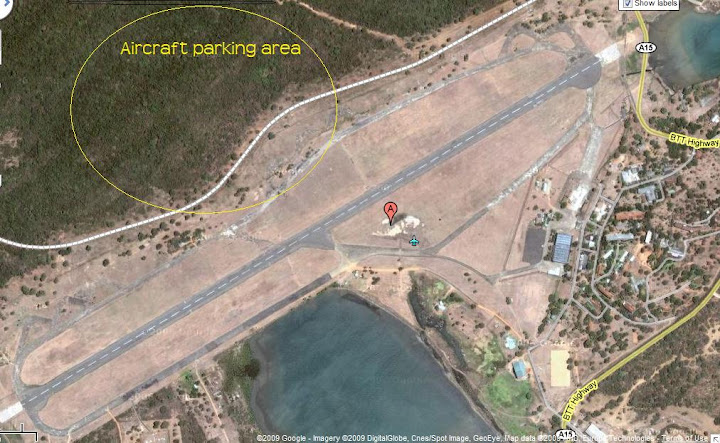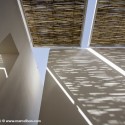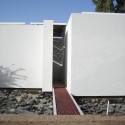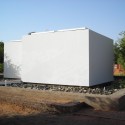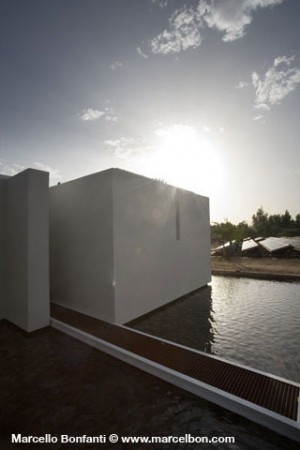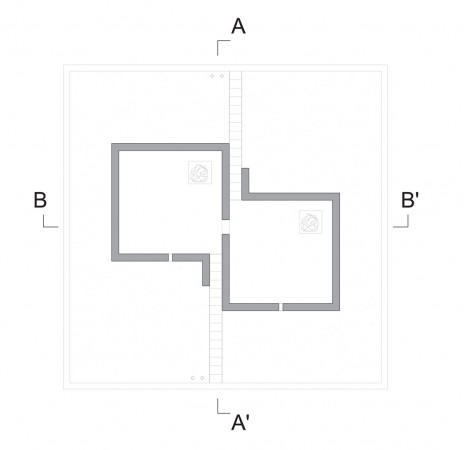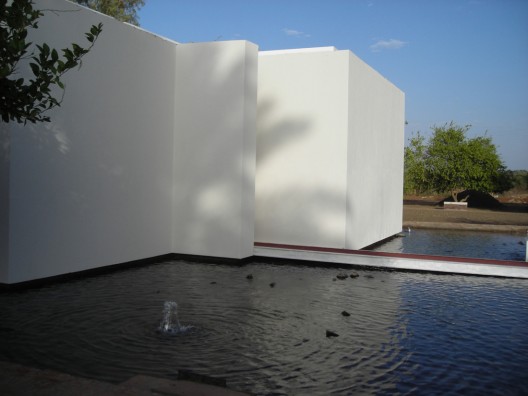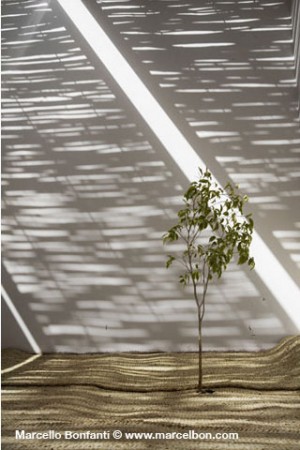Sunday, May 31, 2009
Is Barrelism dead?
 Our jolly old fine arts teacher in the first year at the Architecture Faculty, Mr. Chandraguptha Thenuwara (Thené similar to René as he used to humorously call himself) pollutedour minds with his ideas of barrelism and neo barrelsim. His art installations themed with barrels painted in camouflage colours depict the ideology which he tryed to convey.
Our jolly old fine arts teacher in the first year at the Architecture Faculty, Mr. Chandraguptha Thenuwara (Thené similar to René as he used to humorously call himself) pollutedour minds with his ideas of barrelism and neo barrelsim. His art installations themed with barrels painted in camouflage colours depict the ideology which he tryed to convey.The artist talks extensively about his ideas of barrelism here.
After seeing an end to this 30 year old war, will we see a modification to barrel theory? are we at the end of the barrel era? we can only wonder and Thené would probably have an answer already!
Sponge bob and Architecture School
"Artist Unknown" In sponge bob season 2 episode 18 depicts how most of the schools of Architecture work. I just had to post it.
The plot is as follows, Squidward is teaching art class, and can't wait to see his new students. He opens the doors and greets a whole crowd of people, who say "Is this cooking class?" They go to cooking class, and Squidward sees who his real students are. There is only one. SpongeBob SquarePants. Squidward starts off with the basics, and tells him to draw a circle. He draws a perfect circle, and Squidward is shocked. He later tries to teach him how to make marble statues, but it seems that he can do it himself with a bit of encouragement from Squidward. Squidward, out of jealousy, feels sorry for SpongeBob, who goes out of class. SpongeBob feels ashamed of himself and runs away, to a city dump. When the class is over, an art collector called Monty P. Moneybags comes in and says he'll make Squidward famous for the statue (Which SpongeBob actually made). He trips over while transporting it, knocking off its head. He says that Monty will come back tomorrow to get another one that will "really knock your socks off." Squidward rushes down to the dump where SpongeBob went, and gives SpongeBob another chance. However, upon returning to art class, SpongeBob refuses to do anything of decent quality in Squidward's class, and when he constructs a marble statue, his block collapses. Squidward is so angry that he smashes pillars of marble to make a mess. Monty P. Moneybags comes in and says "Who's responsible for this?" Squidward goes to the janitor and says "He is!" He never realised it, but he made a beautiful statue while throwing a fit.
The posted video is in double speed so one might not be able to follow it directly that's why i just pasted the summery taken from here.
Find the script of this episode here
Sri Lanka’s first coal power plant under construction
Friday, May 29, 2009
Breaking Wind in Sri Lanka

Wind power is the fastest growing industry in the alternative energy sector. Wind turbines generate clean and green power for us but they have certain precondition.One of it is the power unit has to be set up in strong wind area. But Green Energy Technologies has developed a brand new wind power generator known as the WindCube. It is smaller compared to the normal wind generator. WindCube is specially designed to set up on the roof of a building in urban and rural areas. WindCube carries a 22 x 22 x 12 feet framework and its single unit can produce a maximum of 60kW of power. Mark L. Cironi, who is the president and founder of Green Energy Technologies, explains, “Building owners anywhere can consider being a part of the renewable energy picture. With WindCube, it’s not necessary to have the wind of Kansas or Nebraska to become a generator of wind power. In states with excellent renewable energy incentives, moderate wind and high electric rates, the payback can be as little as three years.”
CEB took the initiative to carry out a detailed wind-monitoring programme in the south-eastern part of the country in 1988. The area covered under this project was about 1500 km2. Initial studies of wind resource assessment in the Southern coastal belt of
Following the resource assessment phase, CEB started to plan its first grid-connected wind power plant of capacity 3 MW to be sited in Hambantota on the south-eastern coast. It was planned as a pilot plant for CEB to get hands-on experience and also to study the implications of integrating wind power into the grid system. Feasibility study and design of the plant were carried out using the database developed by the earlier wind resources study.
The total capacity of the pilot wind farm is 3 MW consisting of 5 wind turbines of 600 kW each. The expected annual energy generation is around 4.5 GWh. The project was financed by the World Bank and Global Environmental Facility (GEF) and was commissioned in March 1999. The total project cost was around Rs. 280 million, of which 66% was foreign funds and 34% local. The foreign cost of the project was financed by the World Bank and the Global Environmental Fund, whereas the total local cost was borne by the CEB. Approximately 25% the foreign cost was provided by GEF as grant.
How ever I do recall in 2005 reading a leaflet with regard to a company which manufactures domestic wind turbines in Sri Lanka. I was unable to locate them.
With the present state of develepmont in Hambantota I would like to see if setting up of some more windturbines to the already existing bunch would be economically viable.
Tuesday, May 26, 2009
An Air Port for Trinco!
The Immigration and Emigration Department is to take over operations at the Trincomalee Harbour from next month and will establish a sub office in the district, as a move towards preparing for the proposed international airport to be developed in China Bay in the future. Immigration and Emigration Chief P.B. Abeykoon said the department would set up a sub office in Trincomalee to take over duties at the Trincomalee Harbour from June 15. He said presently the duties at the Trincomalee Harbour had been conducted by the police due to security reasons and now that the war was over the operations would be taken over by the department. Mr. Abeykoon said that in future all operations like checking people and vessels that would be anchoring in the harbour, freight forwarding operations etc., would be monitored and would be done under the purview of the department. He said the new arrangements were being put in place as a part of the development and rehabilitation programmes being carried out in the Eastern Province to upgrade industries like tourism following the liberation of the areas from terrorism. Mr. Abeykoon said discussions were being held at official level to upgrade the China Bay airport now under the Air Force, to an international airport in future. “The project is chiefly being handled by the Civil Aviation Authority and the Department of Immigration and Emigration will also be involved in arranging other necessities like opening an office in the area. The day is not very far where passenger planes could land in Trincomalee,” he said. Airport and Aviation Deputy Minister Sarath Kumara Gunaratne told Daily Mirror the government was planning to upgrade all minor domestic airports in the country with better facilities and new technology. He said airports like Hingurakgoda, Koggala and China Bay will be upgraded to develop domestic trips which will directly influence the trade of tourism in future. The Minister said work on the second international airport in Hambantota which was shifted to Mattala from Weerawila due to environmental issues would also begin soon.
An international Airport for Trinco? Why is everything becoming international lately, wouldn't a domestic airport do? Banudev at Skyscraper city has his own views since he seems to be really keen about airports, he goes on to say...
"Developing the Trimcomalee airport might work for Sri Lanka. It has plenty of area for future developments and aircraft parking. But China-Bay's current runway is 2393metres long and there is no way to extend the runway as it has blocked by river.... Therefore, they must need the 2nd runway with atleast 3500 metres long to allow the large aircraft landing. Trimcomalee could be used for serving Far East and Indian flights."
Monday, May 25, 2009
Flight of the Birds of Bundala: The Bundala Wildlife Park

 Perched on the highest point of the compound one would be able to see how these buildings are visible to the birds. The structures rise up from the bushes like dinosaurs of prehistoric times with the monolithic Zinc allum sheets which are the only elements visible.
Perched on the highest point of the compound one would be able to see how these buildings are visible to the birds. The structures rise up from the bushes like dinosaurs of prehistoric times with the monolithic Zinc allum sheets which are the only elements visible. The concrete decks and minimalistic finishes, the trademarks of the architect lingers on every nook, As the architect himself mentions, being true to himself at all times
The concrete decks and minimalistic finishes, the trademarks of the architect lingers on every nook, As the architect himself mentions, being true to himself at all times
Building without Buildings : Minneriya Wildlife Park
Using indigenous materials and indigenous flavors, the architect creates some thing very unique which is ultimately true to our culture and to ourselves.
Sunday, May 24, 2009
Prayer & Meditation Pavillion / Studio Tam associati
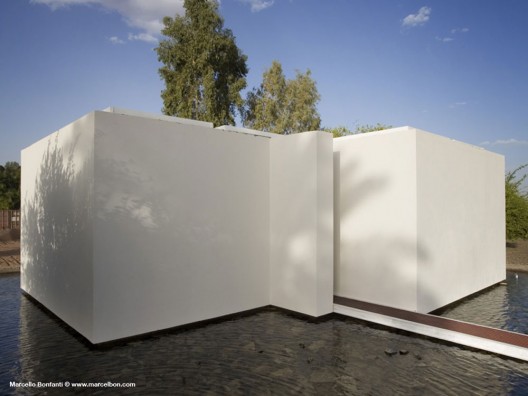
Location: Khartoum, Popular Republic of Sudan
Client: EMERGENCY ngo
Site Engineers: Roberto Crestan (EMERGENCY ngo)
Program Coordinator: Pietro Parrino (EMERGENCY ngo)
Photographs: Raul Pantaleo & Marcello Bonfanti
Zero Emissions Motorcycle
 When we think about green energy vehicles we often think about modest designs and low speeds. But 6 final-year engineering students of Kingston University have designed a bike that dispels all myths about green vehicles.This bike has the ability to reach speeds of 102mph, race around a 38 mile mountainous course and is powered by batteries that can be charged from a standard household socket! They will take this bike to the world’s first zero-emissions Grand Prix this summer. The Kingston team will be competing with 24 eco-bikes from America, India, Italy, Germany and Austria at the 2009 Isle of Man TTXGP. Mr. Paul Brandon who is the Course Director for motorsport and motorcycle engineering shared his views, “Being green doesn’t have to mean slow. There are too many skeptics when it comes to electric vehicles but we all need to reduce our CO2 output and this initiative is taking a huge leap in that direction. The ideas we and others put to the test on the racing circuit are the ones most likely to become commonplace on the road.”
When we think about green energy vehicles we often think about modest designs and low speeds. But 6 final-year engineering students of Kingston University have designed a bike that dispels all myths about green vehicles.This bike has the ability to reach speeds of 102mph, race around a 38 mile mountainous course and is powered by batteries that can be charged from a standard household socket! They will take this bike to the world’s first zero-emissions Grand Prix this summer. The Kingston team will be competing with 24 eco-bikes from America, India, Italy, Germany and Austria at the 2009 Isle of Man TTXGP. Mr. Paul Brandon who is the Course Director for motorsport and motorcycle engineering shared his views, “Being green doesn’t have to mean slow. There are too many skeptics when it comes to electric vehicles but we all need to reduce our CO2 output and this initiative is taking a huge leap in that direction. The ideas we and others put to the test on the racing circuit are the ones most likely to become commonplace on the road.”Students were working on this project since October last year. This project is also a part of their final assessment. The bike is run from a custom-built, 72-volt battery. According to Mr. Brandon, “The energy density of batteries is far less than that of petrol or diesel so how we manage the energy we carry is critical to our success in the race. The bike we have designed has a whole vehicle efficiency of 90 per cent, so we are only wasting 10 per cent of what we carry. By comparison a petrol-based vehicle wastes 70 per cent of the energy it carries.”
Alex Jones-Dellaportas, one of the team members claimed they have designed the bike through different stages. They focused on making the bike faster and lighter. Most of the materials they used for the bike were recycled. Another student elaborated further that appearance wise the bike looks like any other bike but there is a huge difference. This motorbike has no internal combustion engine, no exhaust system and no fuel tank. It goes without saying that the overall CO2 usage, including the carbon dioxide generated to charge the batteries, will be around 50 per cent less carbon dioxide than a petrol or diesel-power bike. Gonzalo Carrasco, another student of the team says, “People need to realize that this technology is the future. By entering green races and building green designs we are hoping policy-makers will see the potential for this technology and start investing in it.”
Azhar Hussain who is the founder of TTXGP motorcycle race, is quite enthusiastic about the team’s motorbike. He too wants to watch the motorbike in action when it would be racing against formidable competition from around the globe on one of the most challenging road race courses in the world. Azhar Hussain thinks that Kingston University team has done a great job and if everything goes right then the exposure for Kingston will be priceless
House of Vision by FORM/Kouichi Kimura Architects










Location: Shiga, Japan

Construction Year: 2008

Constructed Area: 181,74m2
Photographs: Takumi Ota




